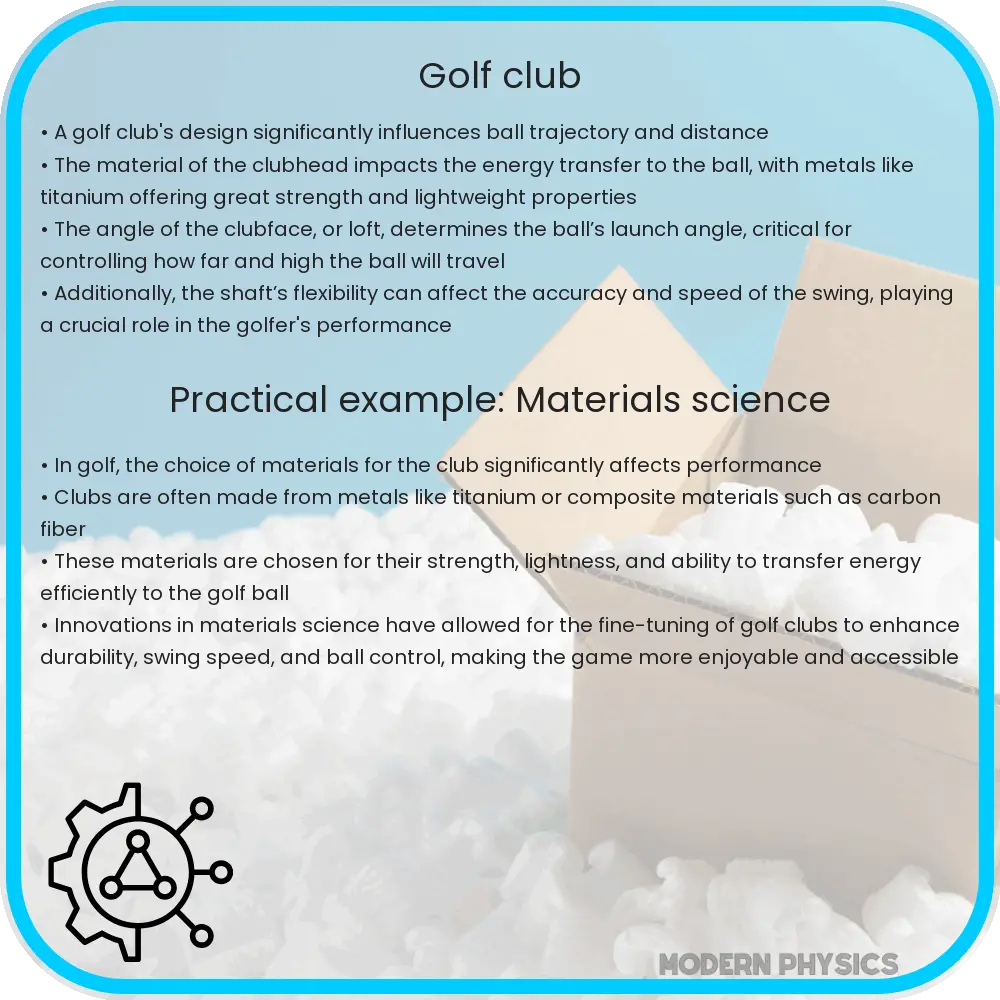Explore the physics and biomechanics of golf swings in this detailed article, covering swing mechanics, motion, force, and technological aids.

Golf Club Dynamics: Understanding Swing Mechanics, Motion, and Force
The game of golf is not just a test of skill and strategy, but also a fascinating display of physics in action. Every swing a golfer makes involves a complex interplay of mechanics, motion, and force. Understanding the dynamics of a golf club during a swing can help players improve their game and appreciate the science behind each shot.
Swing Mechanics: The Foundation of Golf
The golf swing can be broken down into several key components: the grip, stance, backswing, downswing, and follow-through. Each element must work in harmony to produce a successful shot. The grip affects the angle of the clubface at impact, the stance sets up the swing’s trajectory, and the backswing and downswing generate the necessary power. Finally, the follow-through ensures consistency and accuracy.
- Grip: The way a golfer holds the club impacts the rotation and angle of the clubface.
- Stance: A stable stance provides the foundation for a balanced swing.
- Backswing: This is where potential energy is built up.
- Downswing: The stage where potential energy converts into kinetic energy.
- Follow-Through: Ensures a smooth trajectory and accuracy.
Motion and Force: The Physics of a Golf Swing
Two key principles of physics, Newton’s Laws of Motion and the conservation of angular momentum, play crucial roles in golf swings. Newton’s Third Law, stating that every action has an equal and opposite reaction, is evident in how the force exerted on the ball is equal to the force applied by the club. The conservation of angular momentum explains why a golfer’s body rotates around a fixed pivot point, usually the spine, during the swing.
The clubhead’s speed at impact is a critical factor in determining the ball’s distance. This speed is a function of the club’s length and the golfer’s ability to generate force during the downswing. The longer the club, the greater the potential for speed, but control becomes more challenging.
- Newton’s Third Law: Demonstrates the action-reaction force pairs between the club and the ball.
- Angular Momentum: The rotational equivalent of linear momentum, crucial for the swing’s power.
In the next section, we will delve deeper into the biomechanics of a golf swing, exploring how muscle strength and flexibility contribute to the swing’s effectiveness and how technology can aid in enhancing performance.
Biomechanics of a Golf Swing: Strength and Flexibility
Biomechanics plays a pivotal role in optimizing a golfer’s swing. Key muscle groups involved include the core, legs, and arms. Core strength is essential for stability and power generation during the swing. The legs provide the necessary foundation and balance, while the arms and wrists are crucial for controlling the club’s path and speed. Flexibility, particularly in the hips and shoulders, allows for a wider range of motion, leading to a more effective swing.
- Core Muscles: Key for maintaining posture and generating rotational force.
- Leg Strength: Provides stability and helps in transferring energy from the ground up.
- Arm and Wrist Flexibility: Crucial for controlling the clubface and generating speed.
Technology in Golf: Enhancing Performance
Advancements in technology have significantly impacted golf. From high-tech clubs designed for specific swing types to sophisticated swing analysis software, technology aids in fine-tuning a player’s technique. For example, sensors and motion capture systems can provide detailed feedback on swing mechanics, allowing players to make precise adjustments for improved performance.
- Custom Clubs: Designed to complement individual swing styles and physical characteristics.
- Swing Analysis Tools: Offer insights into swing path, clubhead speed, and ball trajectory.
Conclusion: The Science and Art of Golf
In conclusion, understanding the dynamics of a golf club swing involves a blend of physics, biomechanics, and technology. The interplay of swing mechanics, motion, and force is not just a matter of physical exertion but also a strategic application of scientific principles. Each swing is a complex orchestration of muscle strength, flexibility, and precision, honed through practice and aided by technological advancements.
Golfers, from amateurs to professionals, can benefit from a deeper understanding of these concepts. By appreciating the science behind each shot and leveraging technology, players can refine their skills, achieve greater consistency, and enjoy the game to its fullest. Ultimately, golf remains a sport where art meets science, where each swing is a testament to the beauty of physics in motion and the human body’s remarkable capabilities.
